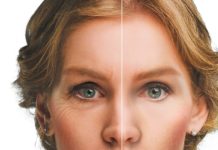Tardive dyskinesia (TD) is a neurological disorder characterized by involuntary and repetitive movements, often caused by the long-term use of certain medications, especially those used to treat psychiatric conditions. The symptoms of TD can worsen over time and become irreversible, impacting a patient’s quality of life. TD can also lead to other complications, such as difficulty speaking and swallowing, affecting communication and eating. To learn more about the signs of tardive dyskinesia, click below.
Understanding the causes, symptoms, and treatments for TD is crucial for better outcomes. Early detection and intervention can slow down TD’s progression and provide relief to patients.
Treatment options include adjusting medications, botox injections, and deep brain stimulation. Therefore, it’s essential for healthcare providers to educate patients and caregivers on the risks and benefits of long-term medication use and closely monitor them for signs of TD.
Causes of Tardive Dyskinesia
Tardive Dyskinesia Causes
Tardive Dyskinesia is a neurological disorder caused by the long-term use of certain medications, particularly antipsychotic drugs used to treat Schizophrenia, Bipolar Disorder, and other mental health conditions.
The exact cause of TD is not fully understood, but it is believed to result from changes in the dopamine receptors in the brain affected by these medications.
Medications Associated With Tardive Dyskinesia
Commonly associated medications with Tardive Dyskinesia include first-generation antipsychotics such as Haloperidol, Chlorpromazine, and Fluphenazine. Second-generation antipsychotics, also known as atypical antipsychotics, can cause TD but are less likely to do so.
Other medications that may cause TD include antidepressants, anti-anxiety drugs, and anti-epileptic medications.
Risk Factors That May Increase the Likelihood of Developing TD
Risk factors that may increase the likelihood of developing Tardive Dyskinesia include:
Older age
Female gender
A history of long-term use of antipsychotic medications
A history of movement disorders
A family history of TD may also increase the risk.
Other risk factors include:
Higher medication doses
Longer treatment duration
Multiple medications that affect dopamine levels in the brain
Symptoms of Tardive Dyskinesia
Definition of TD
Tardive Dyskinesia (TD) is a neurological disorder characterized by involuntary movements of the face, tongue, mouth, and other body parts. These movements are repetitive, unpredictable, and often interfere with daily activities.
TD is commonly associated with the long-term use of antipsychotic medications, although it can also occur after short-term exposure to these drugs.
Common Physical Symptoms
The physical symptoms of TD can vary from person to person but typically involve abnormal movements of the face, such as lip smacking, tongue protrusion, and grimacing. Other common symptoms include rapid eye blinking, jaw swinging, and jerky movements of the arms and legs.
These movements can be disruptive and embarrassing, often leading to social isolation and difficulty performing daily tasks.
Psychological Symptoms Associated With TD
In addition to the physical symptoms, TD can also have psychological effects on individuals. Many people with TD report feelings of anxiety, depression, and low self-esteem due to the visible nature of their symptoms.
These psychological symptoms can further exacerbate the physical symptoms, leading to a cycle of distress and worsening the disorder. Additionally, the social stigma surrounding TD can contribute to feelings of shame and isolation, making it challenging for individuals to seek treatment and support.
Treatment of Tardive Dyskinesia
Treatment options for managing TD include medications, behavioral therapies, and alternative approaches.
Medications Used To Treat TD
Medications commonly used to treat TD include Tetrabenazine, Valbenazine, and Deutetrabenazine. These medications work by decreasing dopamine levels in the brain, thereby reducing TD symptoms.
Antipsychotic drugs, the primary cause of TD, may also be gradually tapered and discontinued under medical supervision to alleviate symptoms.
Alternative Treatments for TD
Alternative treatments for TD include non-pharmacological approaches such as Cognitive-behavioral Therapy (CBT) and Deep Brain Stimulation (DBS).
CBT aims to help individuals identify and manage TD triggers and improve coping skills. DBS involves surgically implanting a device that sends electrical impulses to the brain to modulate abnormal neural activity and reduce TD symptoms.
Additionally, complementary therapies such as acupuncture, yoga, and meditation may also be used to alleviate TD symptoms.






















